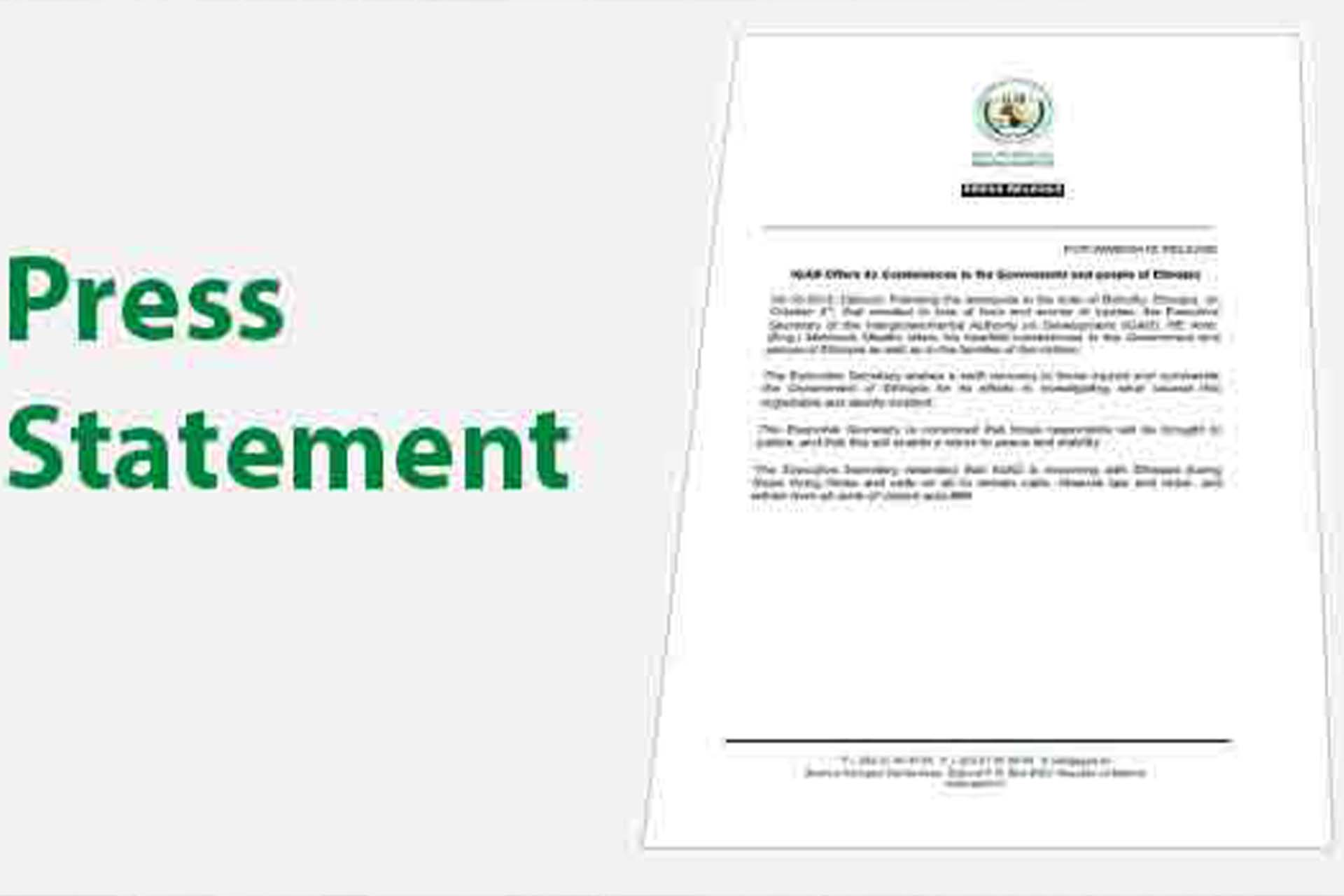Jan. 15, 2019 (DJIBOUTI, Djibouti): A serious and widespread Desert Locust outbreak is destroying crops and pasture across eastern Ethiopia and neighbouring areas of Somalia, parts of Sudan, Eritrea and northern Kenya with a high risk of further spread in the absence of immediate and significant scale up in control activities. There is a risk that some swarms could appear in northeast Uganda, southeast South Sudan and southwest Ethiopia. According to FAO, this is the worst situation in 25 years and unusual weather and climate conditions have contributed to it, including heavy and widespread rains since October 2019. A further increase in locust swarms is likely to continue until about June due to the continuation of favourable ecological conditions for Locust breeding.
There has been a significant and extremely dangerous increase in swarm activity during the past week in Kenya where numerous, large immature swarms are spreading from the initial invasion areas of the northeast (Mandera county) south to Wajir and Garissa, west along the Ethiopian border (Moyale and Marsabit counties) and southwest into central areas north of Mt Kenya (Isiolo, Samburu, Meru and most recently Laikipia counties). One immature swarm was 60 km long by 40 km wide in the northeast. More swarms are expected to occur in these areas, some of which are already moving north of Mt. Kenya westwards to the Rift Valley (Baringo county) where they could continue northwest to Turkana county, while others will move west along the Ethiopian border, and some swarms could move further south to Tana River county.
“IGAD calls on its Member States, the East African Community and partners to pull resources together to prevent, control and possibly eradicate the Desert Locust threat to the food security of the region”. “Prevention and control measures must be scaled up to contain further spread of the Desert Locust”. “Countries must act urgently to avoid a food security crisis in the region” said Dr Workneh Gebeyehu, IGAD’s Executive Secretary.
Dr David Phiri, FAO Sub regional Coordinator for the Eastern and Representative of the African Union and the United Nations Economic Commission for Africa warned, ‘the locust is making the bad food security situation worse in the sub-region, exacerbating the existing dire food insecurity and malnutrition in the sub-region. He added that the weather seems favourable for the locust breeding with high probability that the locust will continue to breed until March-April 2020, if no longer’. The Governor of Mandera County in Kenya H. E. Ali Roba issued a press statement via the Mandera Media Agency on the 8th of January 2020 “Unfortunately counties are ill prepared technically, financially and we lack the capacity and expertise to handle such disastrous invasion by locusts.” He added, “Mandera is a vast county with over 26,000 square kilometres and
desperately requires a simultaneous multi-agency approach in all its sub-counties to salvage the situation as it is right now”.
Key messages
- This is the worst situation in 25 years, according to the FSNWG Desert Locust Alert December 2019 and the FAO Desert Locust Bulletin No. 495 (6th of January).
- The Desert Locust is a serious threat to the food security of the East Africa region; currently threatening rural livelihoods especially in Ethiopia, Somalia, Djibouti, Eritrea, Sudan and Kenya, and the risk of spread to South Sudan and Uganda is very high given the currently limited control activities, and the high mobility and reproductive potential of the Locust.
- Desert Locust Situation remains a serious concern for FAO, national governments and relevant institutions; including the Desert Locust Control Organization for East Africa (DLCO-EA).
The Desert Locust is the most dangerous of the nearly one dozen species of locusts. It is normally present in the desert areas across 20 countries between West Africa and India, covering nearly 16 million square kilometers. Green vegetation and moist sandy soils are favored for breeding. A typical desert locust swarm can contain up to 150 million locusts per square kilometer. Swarms migrate with the wind and can cover 100 to 150 kilometers in a day. An average swarm can destroy as much food crops in a day as is sufficient to feed 2,500 people and pasture biomass.
Recommendations
- Increased ground surveillance for early detection.
- Increased use of wind forecasts, to help pre-empt trajectory of desert locust bands and swarms.
- Immediate regional mapping of current invasion and forecast trajectory.
- Aggressive targeted aerial and ground spraying.
- Immediate upscaling of aerial control operations.
- Use of local radio to disseminate and educate (early detection and reporting). Encourage citizens to report any incidences of desert locust.
Contact details for Interviews:
- Guleid Artan (ICPAC), Director, IGAD Climate Prediction and Applications Center,
T: +254 712 318 755 / +254 708293280
E: gartan@icpac.net / mbaraibar@icpac.net
- Abdi Jama (IFRAH), IGAD Food Security, Nutrition and Resilience Analysis Hub (IFRAH)
T: +254 724 562966
- Cyril Ferrand (FAO), Resilience Team Leader Eastern Africa / Subregional Office for Eastern Africa
T: +254 780 522 580

